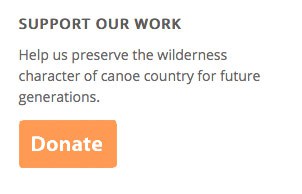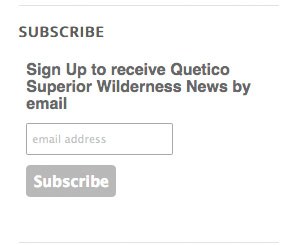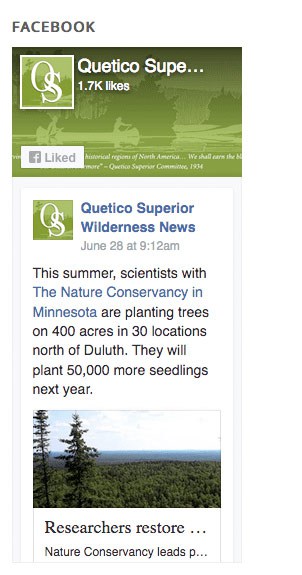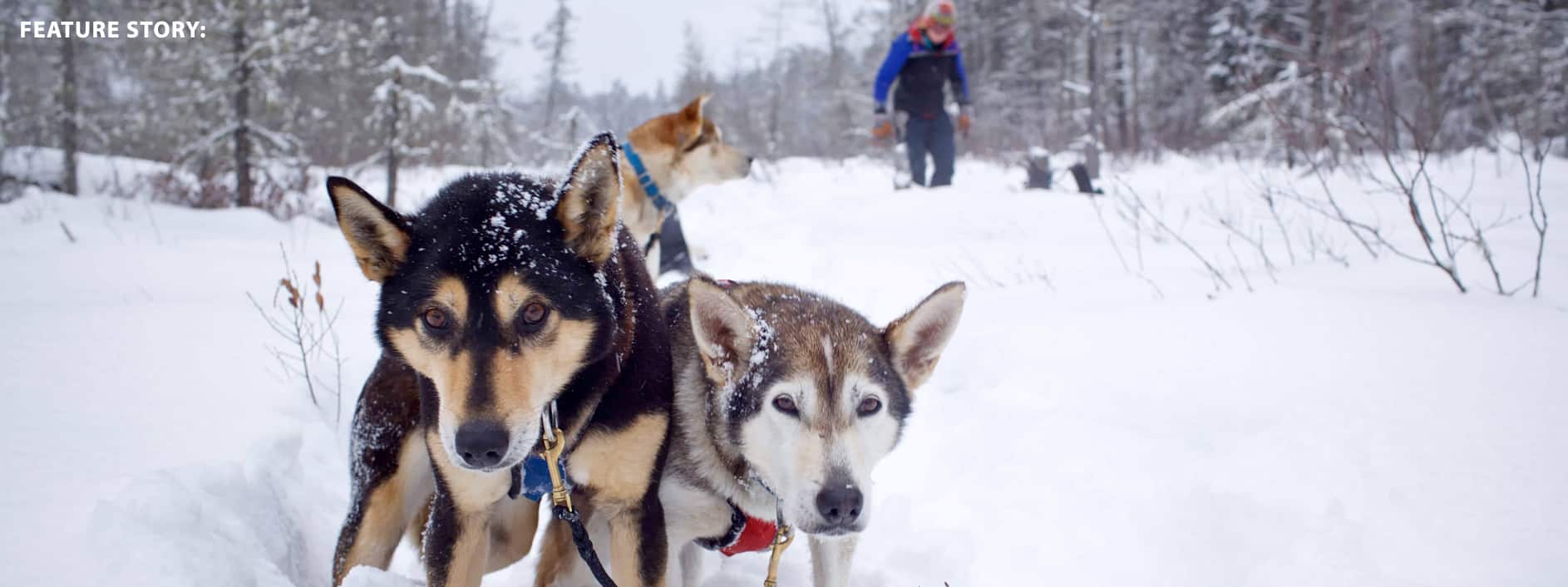
Meet Amy Freeman, Wilderness Guide
by Alissa Johnson
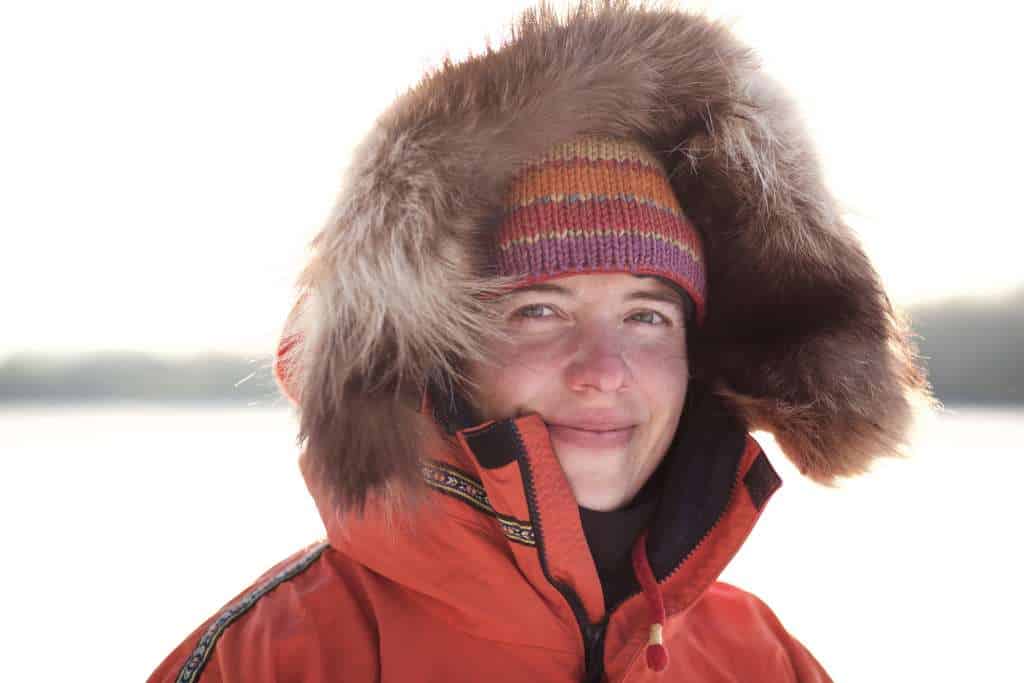
One winter day in the Boundary Waters Canoe Area Wilderness (BWCAW), an otter ran across the path of a dogsled team on Basswood Lake. Excited, the dogs picked up the pace, and the guides—husband and wife team Amy and Dave Freeman—worked to get them under control. Then Amy saw something else out on the ice: wolves.
“The second we stopped, they froze,” she says. Amy doubted herself; perhaps she hadn’t seen anything. But after the couple and the dogs started moving (and the otter escaped), the wolves moved too. “They were curious about us. They came around the point to identify what [we were].”
It was the kind of moment made possible by winter in the BWCAW. There aren’t many visitors and the comings and goings of animals are more obvious against a backdrop of snow. It was, Amy says, a special moment. It was also a normal day at the office.
Amy has built a career as an explorer, guide, and activist—something that allows her to work outdoors in support of the causes she cares about. These days, she and Dave have a growing reputation for their advocacy work on behalf of the Boundary Waters. But it didn’t happen overnight, and it wasn’t something she set out to do. Her story is a reminder of what’s possible when you stay true to your passions and follow opportunities where they lead.
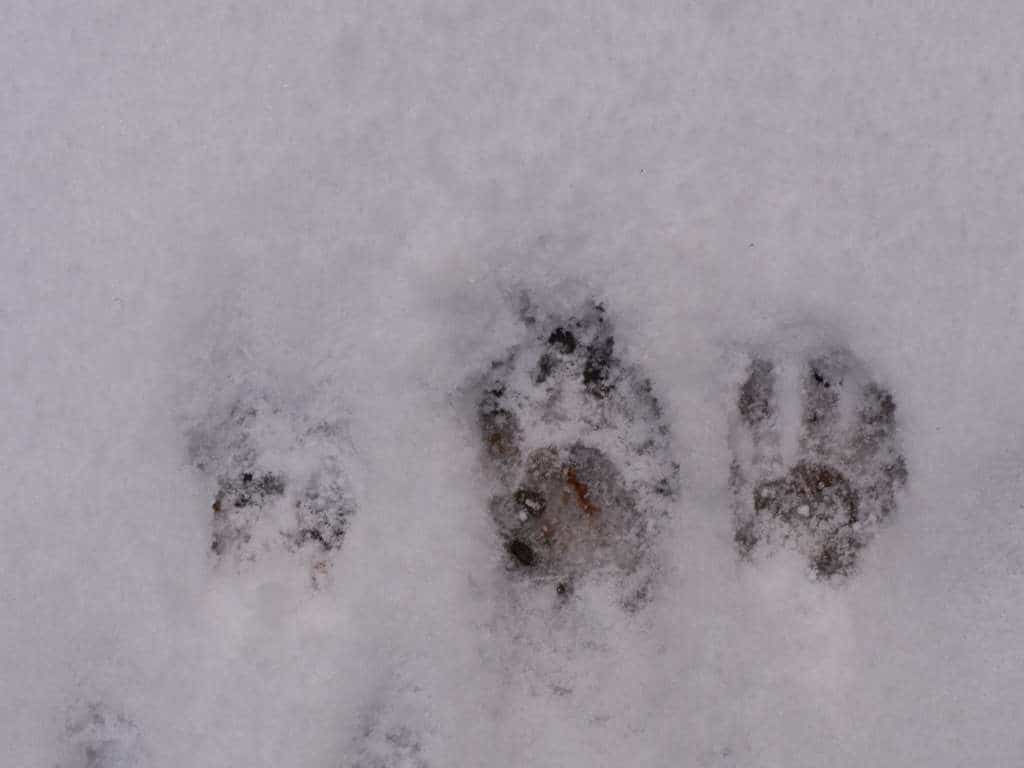
A different kind of career
Amy’s adventure résumé is noteworthy. With Dave, she has kayaked the circumference of Lake Superior, guided dog sled trips in Ely, Minnesota, paddled a signature-covered canoe from Minnesota to Washington D.C. to help raise awareness about mining proposed near the BWCAW, and completed the North American Odyssey.
The latter was a three-year, 11,700-mile journey across North America by kayak, canoe and dogsled. And when the couple encountered the wolves on Basswood Lake, they were in the midst of spending a full year in the BWCAW as another way to raise awareness about proposed mining on the edge of the wilderness.
Along the way, they’ve honed their abilities to share their adventures with others, using updates from the field and live presentations to give their trips a purpose. It has allowed them to show kids the value of adventure through a program called the Wilderness Classroom, and encourage adults to get involved in protecting the Boundary Waters through the Campaign to Save the Boundary Waters. It is a meaningful and impactful career that Amy never imagined possible.
“If you asked me as a freshman in college if I would have been doing this, I would have said no way. Not that I didn’t want to, I just wouldn’t have thought it was possible for a career path,” Amy says.
In fact, she earned a graduate degree in art therapy at the Art Institute of Chicago, in the heart of the city. Happenstance—and an innate love for the Boundary Waters—simply took her in another direction.
Wilderness roots
According to Amy, the life she now leads can be traced back to family trips to northern Minnesota. Visits to the North Shore turned into car camping, which in turn led to day trips into the wilderness area and finally a canoe trip around the age of 13.
“We made all the rookie mistakes like a route with too many portages and we brought too much stuff. But there was something about the place. I really fell in love.” Amy marveled at the lack of roads, buildings, and lights. She could see stars at night, and she could lie on a rock and listen to water lap at the shore, a loon calling across the lake.
Amy sought every opportunity to go back, and during college and graduate school, she guided kayak trips in Grand Marais. In fact, she met Dave during one of those summers. He had paddled the Mississippi River and completed several dogsledding expeditions in northern Canada. When she told him she wanted to paddle the circumference of Lake Superior, he was on board. They did so after she graduated in 2006 and shared their experience through the Wilderness Classroom, which he started with a friend. It was the first of many adventures.
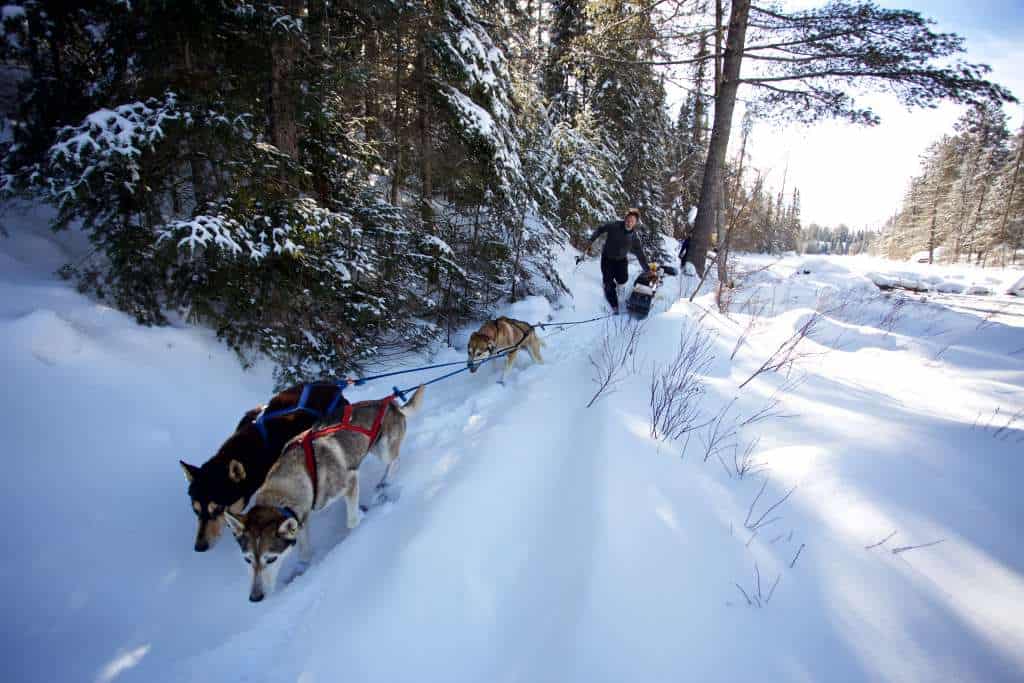
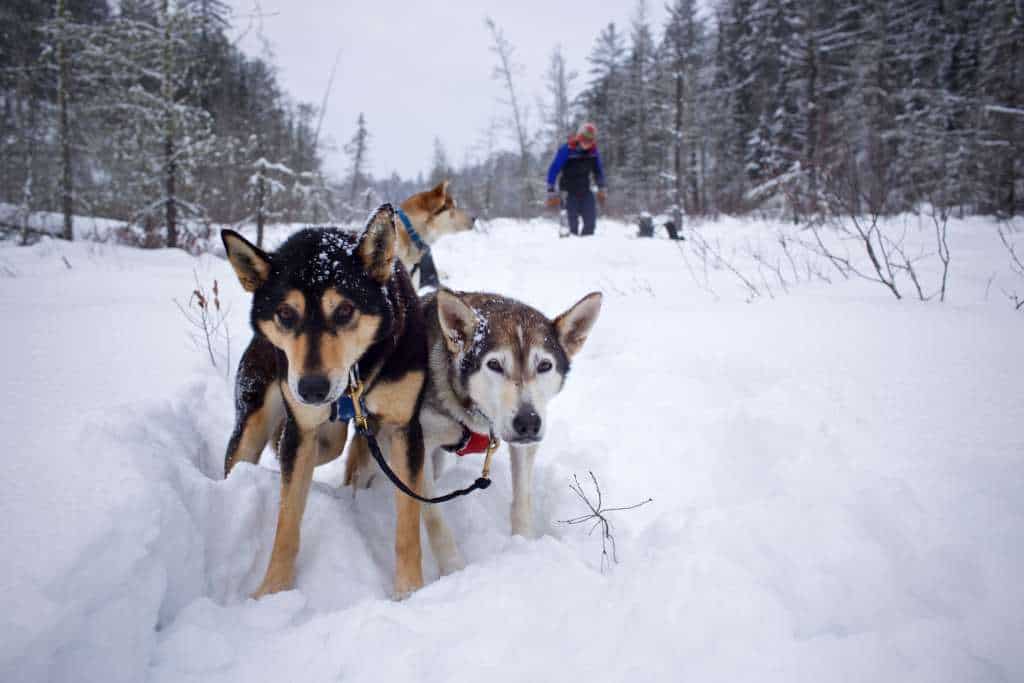
Working as a dogsled guide
After paddling Lake Superior, Dave suggested that Amy try dogsledding. “I knew nothing about sled dogs aside from the fact that I liked dogs. My one qualification was that I could cross country ski,” she says.
At Wintergreen Dogsled Lodge, where Amy still guides out of Ely, Minnesota, Canadian Inuit dogs pull the sleds. They can pull a lot of weight but don’t run that fast. Guides, who let clients steer the sleds, can keep up on skis.
Once again, Amy was hooked on the Boundary Waters—this time during winter. One season turned into ten.
“It’s a really special time to be there because most visitors to the Boundary Waters come during summer. When a group heads out in the winter… you’re probably not going to see anyone,” she says.
There are no mosquitoes and it’s more common to see tracks, like otter slides. “In the winter, when there’s snow, they will bound a couple steps and slide on their bellies, step, step, slide,” she says. And while people do get nervous about the cold, with enough layers, Amy says it’s not difficult to manage.
Wintergreen offers a mix of lodge-based trips and camping trips, so sometimes groups return to the lodge each night. Other times, they camp. A lot of her clients come from the Midwest, but she has guided people from as far away as New Zealand and England.
“I think it’s a bucket list thing in way,” she says of their motivations. “And we certainly get a lot of people who love dogs.”
An evolving career
After her first season of dogsled guiding, Amy and Dave began to piece together an outdoor life. They alternated between seasonal guiding and Wilderness Classroom trips. As they made a name for themselves and acquired sponsorships, they undertook longer journeys.
“Initially, I saw it as a way to get outside and do the stuff I love. It evolved into understanding the importance of exposing kids to wild places,” she says.
When she and Dave learned about the potential impact of nearby mining on the Boundary Waters, they transitioned into advocacy. “It has definitely grown organically. There was always an underlying love of wild places and that has driven a lot of my decision making.”
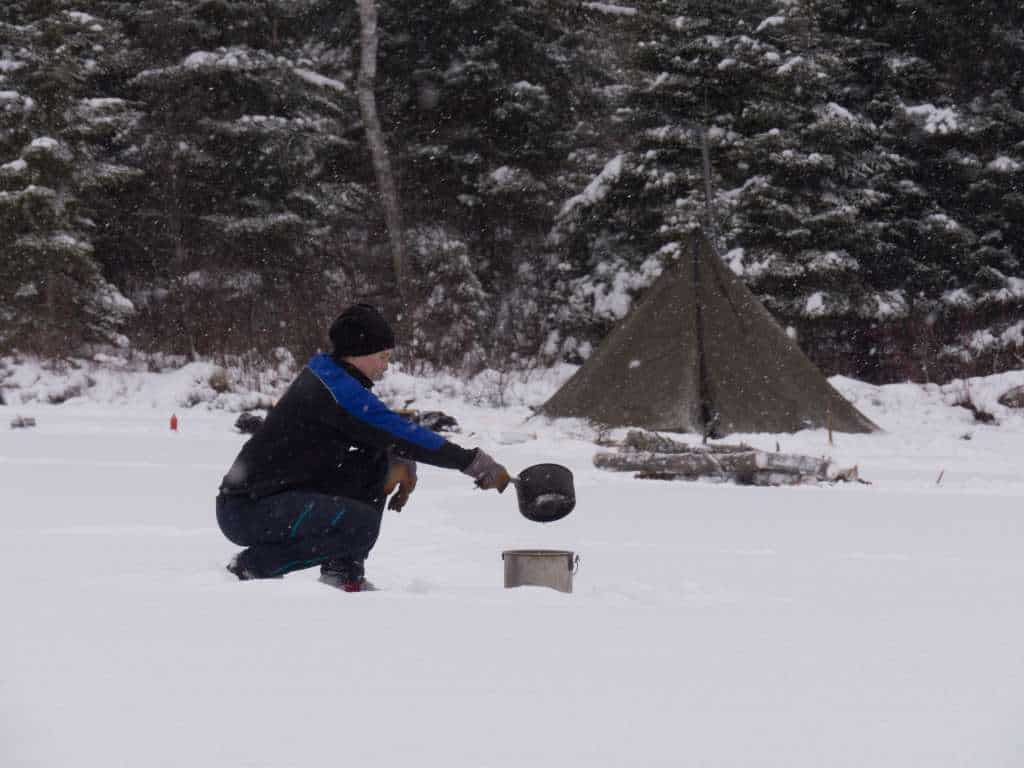
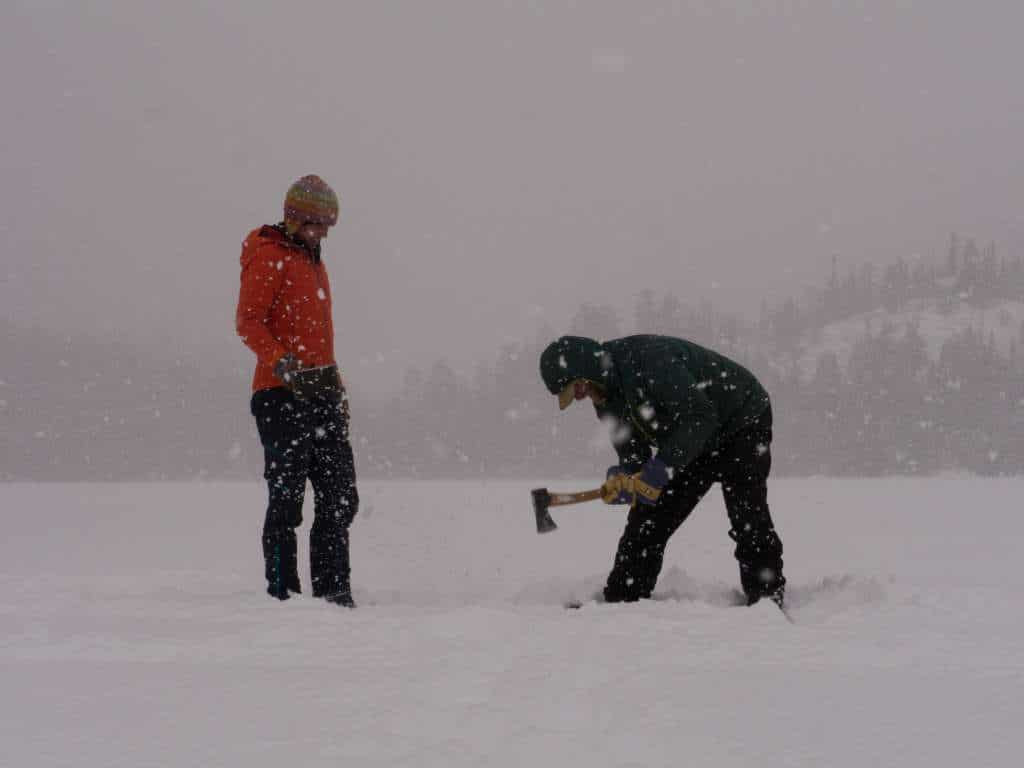
The nontraditional path
There are, of course, tradeoffs. Such a lifestyle requires the willingness to forego a conventional job. “I sort of gave up that regularity, that comfort factor of a 9 to 5 with benefits, for the sake of following my passion,” she says.
And “we always stick to the mantra of keeping our overheads low. As far as the timing of things, it just worked. We didn’t have a house where we were paying a mortgage or car payments or kids, so we can have some freedom in terms of the type of lifestyle or job that we did.”
These days, Amy and Dave have been on tour, promoting their book A Year in the Wilderness: Bearing Witness in the Boundary Waters. They’re also returning to Wintergreen for what will be Amy’s eleventh season of dogsled guiding, and she and Dave are soliciting ideas for their next big adventure. It seems clear that they will continue to let things evolve naturally.
For Amy, the benefits of this lifestyle and returning to dog sledding are clear. She gets to contribute to causes she cares about and introduce people to the winter in the Boundary Waters. And she gets to work outside, in a place that she loves.
“One thing that plays into how I got hooked on [this career], especially dogsled guiding, is that to have a job where you’re outside all the time and active is pretty awesome. It’s something that we’ll probably have to reconsider as we get older or sustain an injury, but for the moment I just think I’m a healthier person because my job keeps me active.”



